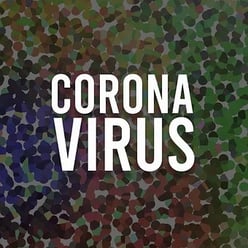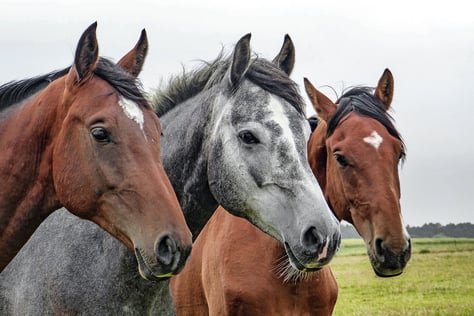If you watch the news or read any story in the last few weeks, you can’t help to have learned about the widespread and potentially dangerous coronavirus that is affecting every country in the world, except, at least for now, Antarctica. Coronaviruses get their name for the crown-like spikes on their surface as seen under a microscope.
 If you Google “coronavirus” to find out more information, undoubtedly you will come across the term “equine coronavirus” that is widespread and infecting horses. This does NOT mean that your horse can transmit the virus to you nor does it mean that your horse will show the symptoms talked about in the news, including possible death. We’re taking a moment to give you a brief overview of the difference between the two. If you have any additional questions about either disease, please discuss with your physician or veterinarian.
If you Google “coronavirus” to find out more information, undoubtedly you will come across the term “equine coronavirus” that is widespread and infecting horses. This does NOT mean that your horse can transmit the virus to you nor does it mean that your horse will show the symptoms talked about in the news, including possible death. We’re taking a moment to give you a brief overview of the difference between the two. If you have any additional questions about either disease, please discuss with your physician or veterinarian.
Human Coronavirus (COVID-19)
The current strain of coronavirus is called Coronavirus Disease 2019, indicating the year it was first identified. According to the CDC (Center for Disease Control), COVID-19 is primarily a respiratory disease.
The virus is thought to spread mainly from person-to-person contact through respiratory droplets produced when an infected person coughs or sneezes. The droplets eventually enter the system through the mouth and end up in the lungs. While not confirmed, the disease may also be transmitted by touching a surface or object that has the virus on it and then touching their own mouth, nose, or possibly their eyes. Symptoms may appear 2-14 days after exposure and typically include fever, cough and shortness of breath.

Equine Coronavirus (EcoV)
ECoV is a relatively newly recognized disease effecting the enteric (intestine) system of adult horses. ECoV is highly contagious, spreading rapidly between horses.
Since 2010, outbreaks of ECoV have been diagnosed in Japan, Europe, and throughout most of the United States. According to Scott Weese, DVM, MSc, Dipl. ACVIM, a professor in the Department of Pathobiology at the University of Guelph’s Ontario Veterinary College, in Canada, “Horses become infected with ECoV by ingesting the virus that was shed in the feces of another horse.”

 Because this virus effects the horse’s intestine, symptoms can mimic colic, including anorexia, lethargy, and fever. Horses exposed to ECoV begin to show symptoms within 48 to 72 hours while those horses infected will, in turn, shed ECoV in their feces three to four days after exposure. In most cases, only supportive treatment such as fluid therapy and non-steroidal anti-inflammatories are needed. While both the human and equine coronavirus are extremely infectious, there is no evidence that either type can contaminate cross-species. The spread of both types can be minimized with basic safety strategies: testing for the virus, isolating those infected, and using thorough hand-washing, protective outerwear and disinfectants.
Because this virus effects the horse’s intestine, symptoms can mimic colic, including anorexia, lethargy, and fever. Horses exposed to ECoV begin to show symptoms within 48 to 72 hours while those horses infected will, in turn, shed ECoV in their feces three to four days after exposure. In most cases, only supportive treatment such as fluid therapy and non-steroidal anti-inflammatories are needed. While both the human and equine coronavirus are extremely infectious, there is no evidence that either type can contaminate cross-species. The spread of both types can be minimized with basic safety strategies: testing for the virus, isolating those infected, and using thorough hand-washing, protective outerwear and disinfectants.

